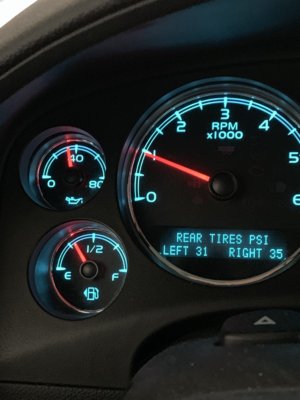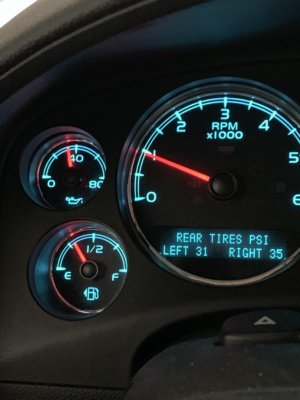Thanks for posting Trevor! This will be of great help to folks.
You are welcome.
Here are the parts I bought, hours spent, steps taken and some lessons learned.
- I bought both an O-ring and Oil Pan gasket. As well as 7 quarts of oil and new oil filter.
ACDelco 12612350 GM Original Equipment Oil Pan Gasket
General Motors 12584922, Engine Oil Pump Pickup Tube Gasket
-I spent a total of 8 hours on the project. Far longer than some because I don't have a lift nor helping hand to get me tools--and my Makita battery went bad, so all bolts were removed by hand. I also tighten many to torque specs, so I take a bit longer in my work.
Steps:
1) Jack front of vehicle to comfortable working area--if you don't have a lift. Support with jack stands as you will be under this truck for hours. I double secured it with 4 stands as I knew I'd be moving things around a bit.
2) Drained oil and removed oil filter (could do this later, if you want to avoid dripping mess).
3) Remove front skid plate (plastic) that covers the front most part of the engine. 4 bolts.
4) Drop steering assembly. You do NOT remove it, just remove 4 bolts and it drops down about 6 inches. These bolts are in place with thread lock (blue). I would make sure you buy red thredlock or similar to use when replacing them. Also, get the torque specs on these as each was very tight and need to be replaced properly. I used a breaker bar and really put some muscle on them to get them secured. I'm sure I torqued them well over 100 lb/ft.
5) Remove front differential. I tried to do this with it only dropped and I couldn't get the oil pan out. You will need to remove each axle (6 bolts each). Move the axles up and out. After 4 bolts (2 on the arm and 2 above the differential) you have to use a jack to support it and let it drop down as you swing the arm lower. This is TIGHT and a major pain to put back in place. Also, before you drop it, disconnect the breather hose that is on the top, driver side of the differential. You also have to disconnect the differential from the drive line via the 4 bolts. This was the least difficult part.
6) Remove the two inspection plates at the back of the oil pan use to view the flywheel.
7) Remove the wire harness at the front of the oil pan. It has a bolt on the driver side that secures it and then it slides drive-side out. 3 clips will be there that hold the starter motor and other wires in the harness. Remove them carefully to be reused again.
8) Remove the transmission cooling lines harness that hold to the passenger side of the oil pan for stability.
9) Remove the two bolts that secure the pan to the transmission.
10) Remove all oil pan bolts. I think there is 10 or 12. They happened to be torqued to 18 foot/lbs.
11) With pan out, you will see the pickup tube. It is secured with 2 12mm bolts to the bottom of the engine and 1 10mm bolt up front to the actual oil pump. Don't strip any of these, if you can. Especially the one up front as it is in a tight location. Take your time.
12) With pickup tube out, you will see the gasket that needs replacing. I had a little dark crusty oil on the pickup tube I removed with a kitchen scotch pad. Be careful not to damage the pickup tube screen on the pan end.
13) Oil the new o-ring and put on tube. Assemble it back into the car. I torqued mine to 18 food/lbs as that is what the oil pan bolts are at. It felt tight but could tell I could strip that out if I kept pushing as this is aluminum.
14) Remove the old oil pan gasket and clean all areas. I've read mixed thoughts on whether or not to also add RTF to the front and back of the gasket (block side) before replacing. I ended up putting a thin bead of RTF on the actual block (just front and back and around the corner bolt areas).
Don't forget to add oil back to your motor. I also filled my oil filter before putting it back in. Only cause the entire system was drained.
Assemble as you took it apart.
Lessons learned:
1) Front Differential is a beast. It really sucks to have to get it back in place. Took a jack (2nd person to help) and gentle lifting. I only got it to work once I realized I need to put the shaft end upward a bit so it goes drive shaft end up and in and just wiggle it in place. Once ALMOST in, I had to reach up and in to reconnect the breather tube. This took 2 hours to do right and my harms were hammered--even with a jack. Its just tight and awful on the ground.
2) DO BE CAREFUL when you replace your fly wheel inspection plates. The passenger side plastic plate was somehow pushed backward a bit and the end was hitting the fly wheel. When I started it for the first time, that part it let out a grinding scream (speed of the fly wheel being touched by plastic). I instantly stopped the engine and started to get really worried. I thought I must have left something inside the pan and it was rubbing against the timing chain as the sound was that fast...like something being hit by a chain. Much faster than a noisy lifter or bearing going bad. I called a brother, who had done this before, and instantly he knew I had one of these plastic inspection parts--that are meant to be removed to inspect the fly wheel--pressing against the fly wheel teeth. WHEW, he was right. Problem solved.
Nothing worse than some horrible noise like that after 8 hours of grueling work.
Hope this helps someone.
Oh, I do wish I knew what this would have cost if I paid to have it done by 1) a mechanic down the street and 2) by a dealer. In the end I spend about $80 bucks in parts (oil included).










